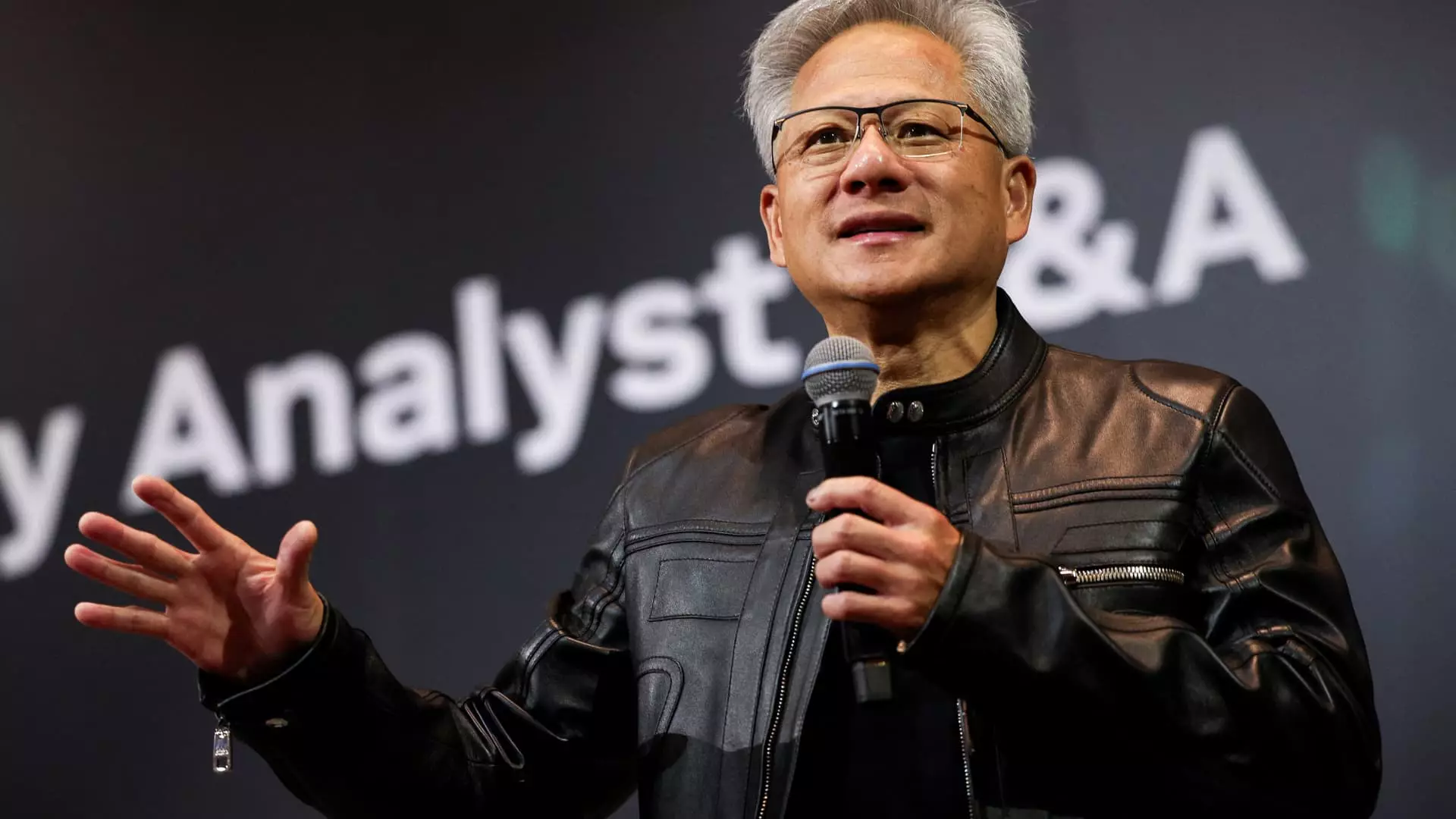In the rapidly evolving landscape of semiconductor technology, Nvidia’s recent praise for Taiwan Semiconductor Manufacturing Co. (TSMC) goes beyond mere flattery; it underscores a pivotal recognition of a technological titan that underpins the global chip industry. Jensen Huang’s enthusiastic endorsement—equating TSMC with the greatest companies in human history—serves as a potent statement of confidence in Taiwan’s semiconductor ecosystem. This confluence of corporate admiration and strategic positioning signals more than just appreciation; it reveals Nvidia’s intent to cement its footprint in the high-stakes arena of chip manufacturing.
Huang’s remarks demonstrate that Nvidia views TSMC as an indispensable partner in its future growth narrative, especially as it pushes the boundaries of artificial intelligence (AI). By highlighting TSMC’s introduction of six new products tailored specifically for Nvidia’s next-generation AI chips, Huang emphasizes the symbiotic relationship between the two industry leaders. It’s a clarion call to stakeholders: the collaboration between Nvidia and TSMC is essential for maintaining technological superiority and advancing the AI frontier, illustrating a dynamic where innovation and manufacturing prowess are tightly intertwined.
The Geopolitical Shadow and Economic Calculations
This industry rapport unfolds amid a complex geopolitical backdrop where the U.S. government is increasingly scrutinizing the control and ownership of vital technological infrastructure. The U.S. CHIPS Act, designed to bolster domestic semiconductor manufacturing, hints at a broader strategic aim to safeguard technological sovereignty. Washington’s openness to acquiring stakes in firms like TSMC, Micron, and Samsung points to a shift in how international alliances are conceived—less purely commercial and more geopolitically charged.
The possibility of U.S. stakes in TSMC touches on a delicate balancing act. On one side, the U.S. seeks to ensure supply chain resilience and technological independence; on the other, it risks exacerbating tensions with China and Taiwan. Huang’s affirmation of TSMC’s stature acts as a subtle yet firm assertion that Taiwan’s semiconductor leadership remains unassailable. This talk of U.S. investments and Taiwan’s expanding US-based footprints highlights a game of strategic chess, where control over cutting-edge manufacturing capabilities is paramount to global technological dominance.
Strategic Expansion and Economic Ambitions
TSMC’s aggressive US expansion plan—pouring over $165 billion into American facilities—further cements its status not only as a market leader but also as a geopolitical actor. Supported by the CHIPS Act, these investments are as much about economic growth as they are about soft power. For Nvidia, working closely with TSMC on new products and establishing a substantial presence in Taiwan exemplifies a remarkable commitment to shaping the future of AI and chips.
Nvidia’s intent to establish a new office in Taiwan, along with its ongoing collaborations with local system integrators and chip firms, signifies a broader strategy: consolidating its technological ecosystem while nurturing local talent. Huang’s comments point to an acknowledgment that Taiwan’s workforce, infrastructure, and supply chain are irreplaceable assets. Nvidia’s growth trajectory is intertwined with Taiwan’s semiconductor landscape—an unspoken declaration that the region’s capabilities are crucial to its global ambitions.
Geopolitical Challenges and Market Realities
Despite the optimism, Nvidia faces tensions stemming from geopolitical concerns, notably China’s security apprehensions regarding its H20 general processing units. Beijing’s decision to pause component procurement signifies the fragility of supply chains and the second-order effects of international politics on the semiconductor industry. The company’s response to these challenges—striving to resolve security concerns—reflects a broader truth: technology no longer exists in a vacuum; it is enmeshed in a web of geopolitical assertions.
The reported US government discussions about acquiring equity stakes in firms like Intel and possibly other chipmakers further complicate the narrative. While some officials suggest a cautious approach, the underlying message remains clear: control over semiconductor supply chains and technological assets is more strategic than ever. Nvidia, sitting at the intersection of innovation and geopolitics, exemplifies how industry leaders must navigate these treacherous waters—balancing growth, security concerns, and international diplomacy.
Nvidia’s enthusiastic praise for TSMC and its strategic initiatives symbolize a bold assertiveness shaping the industry’s future. As the company accelerates its operations in Taiwan, invests in new product lines, and engages with geopolitically sensitive markets, it is carving out a position of unparalleled influence. This narrative isn’t just about corporate admiration; it’s about the recognition that the next era of technological dominance will be driven by a handful of synergetic giants willing to navigate global tensions and forge ahead.
In this landscape, Nvidia’s confidence and Taiwan’s semiconductor prowess form a powerful alliance—one that could redefine global tech leadership. As geopolitical stakes intensify and supply chains become increasingly strategic, Nvidia’s stance reflects a broader truth: the future belongs to those who see beyond borders and recognize that innovation is as much about diplomacy and strategy as it is about silicon and code.

